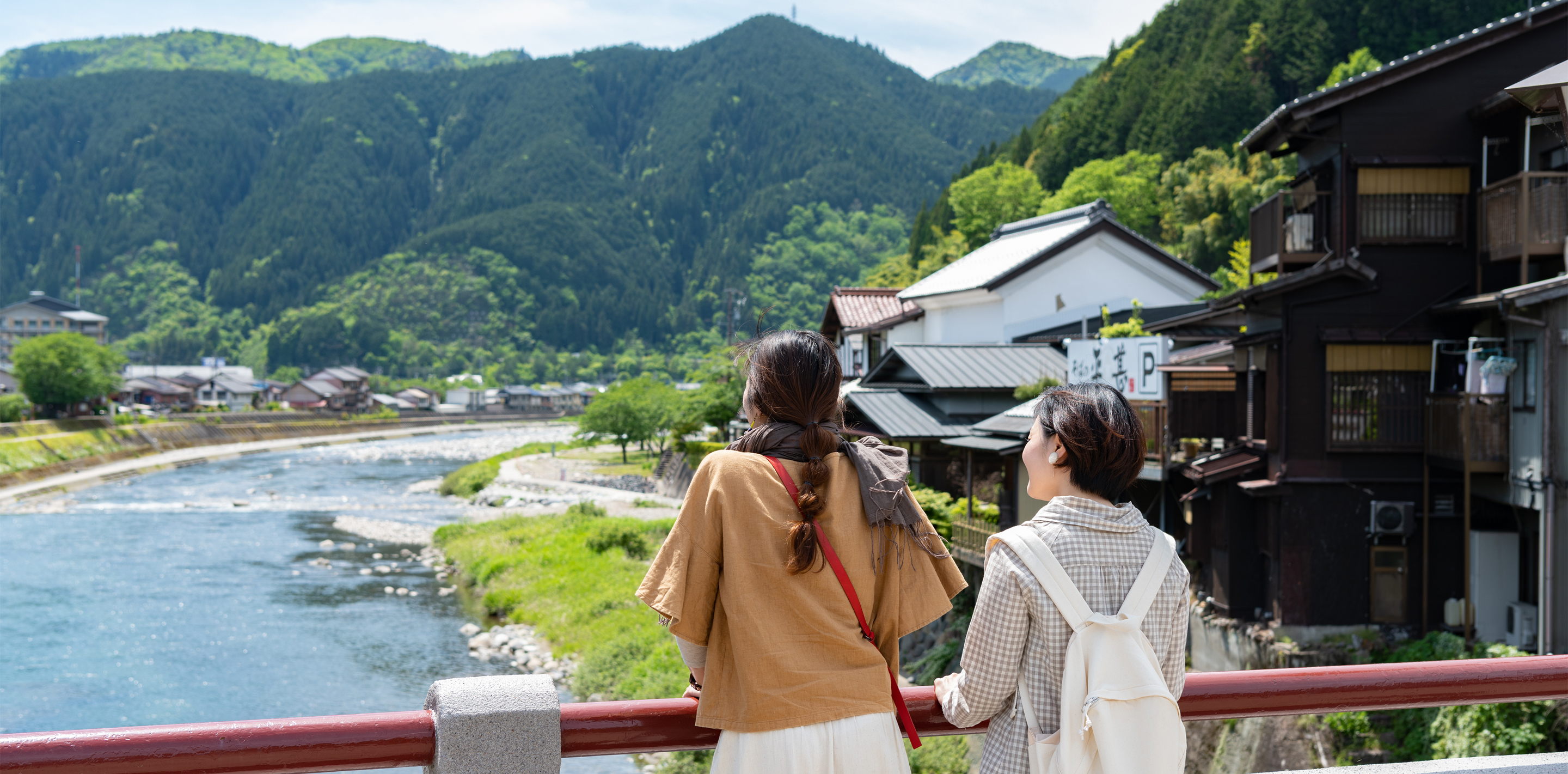Townscape of the castle town and life with water
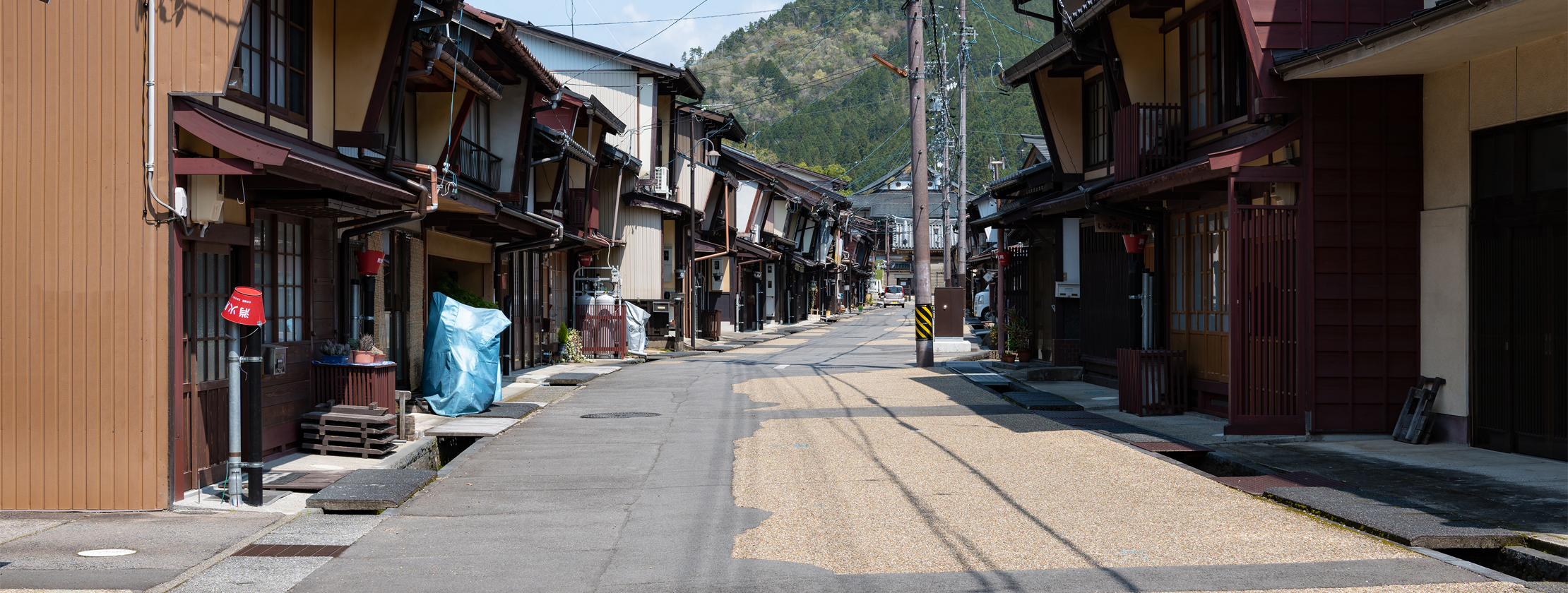
Traditional houses from
Edo era are lining up.
An old townscape where the lifestyle of
the old days still remains
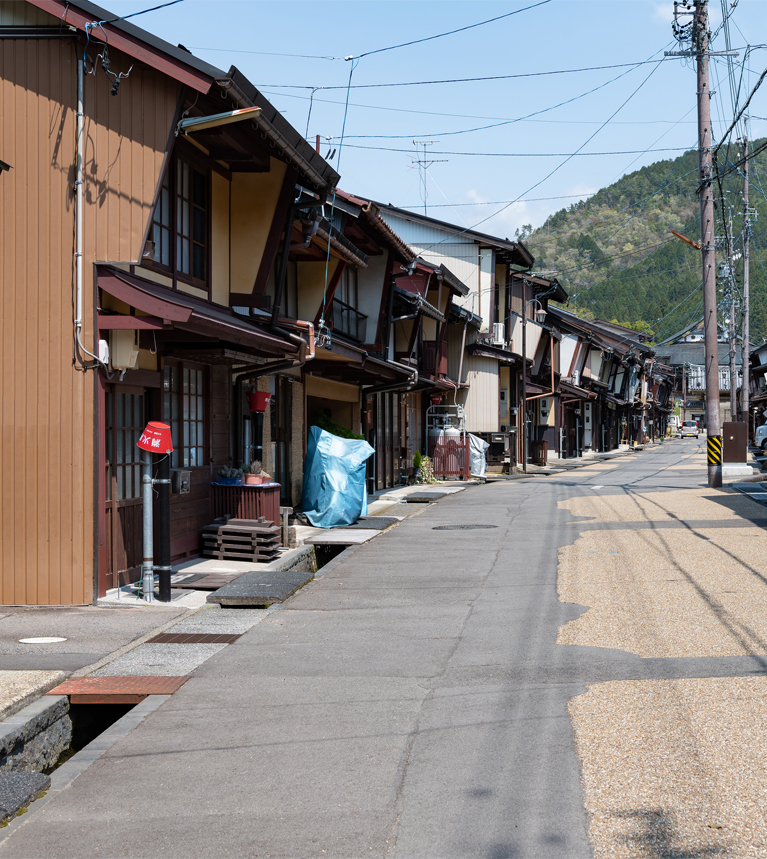
Traditional houses from
Edo era are lining up.
An old townscape where the lifestyle of
the old days still remains
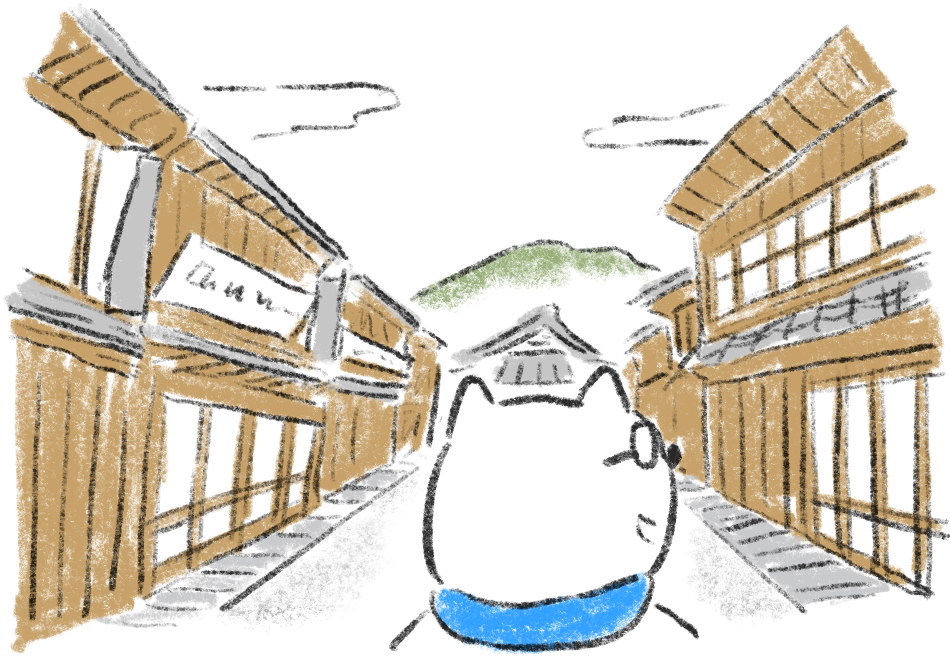
To the southwest of Mt Hachiman, where Gujo Hachiman Castle is located, you can find an interesting old townscape. Shokuninmachi, Kajiyamachi and Yanagimachi still remain the same when it was constructed in the early Edo era. In 2012, it was selected as an Important Preservation Districts for Groups of Historic Building in Japan. According to the castle town history book in 1692, there were 50 houses at Shokuninmachi and Kajiyamachi. There were 8 houses running as blacksmiths, which was the reason for the name of Kajiyamachi. There were various craftsmen and merchants’ houses such as doctors, horse doctors, coopers, carpenters, tatami mat sellers, painters, tailors, indigo dyeing, and liquor sellers. These houses had narrow frontage and long structure and are also called “Unagi-no-nedoko (Eel’s bed). Because taxes were set and collected according to the length of the frontage of the house in the past, so they made it narrow and long. On the other hand, Yanagimachi was a samurai town where intermediate to low-ranking samurai lived during Edo era. On the northern part of the town, the Ashigaru Nagaya (House for lower level soliders), where the lower ranking samurai lived, remains as it was at that time.
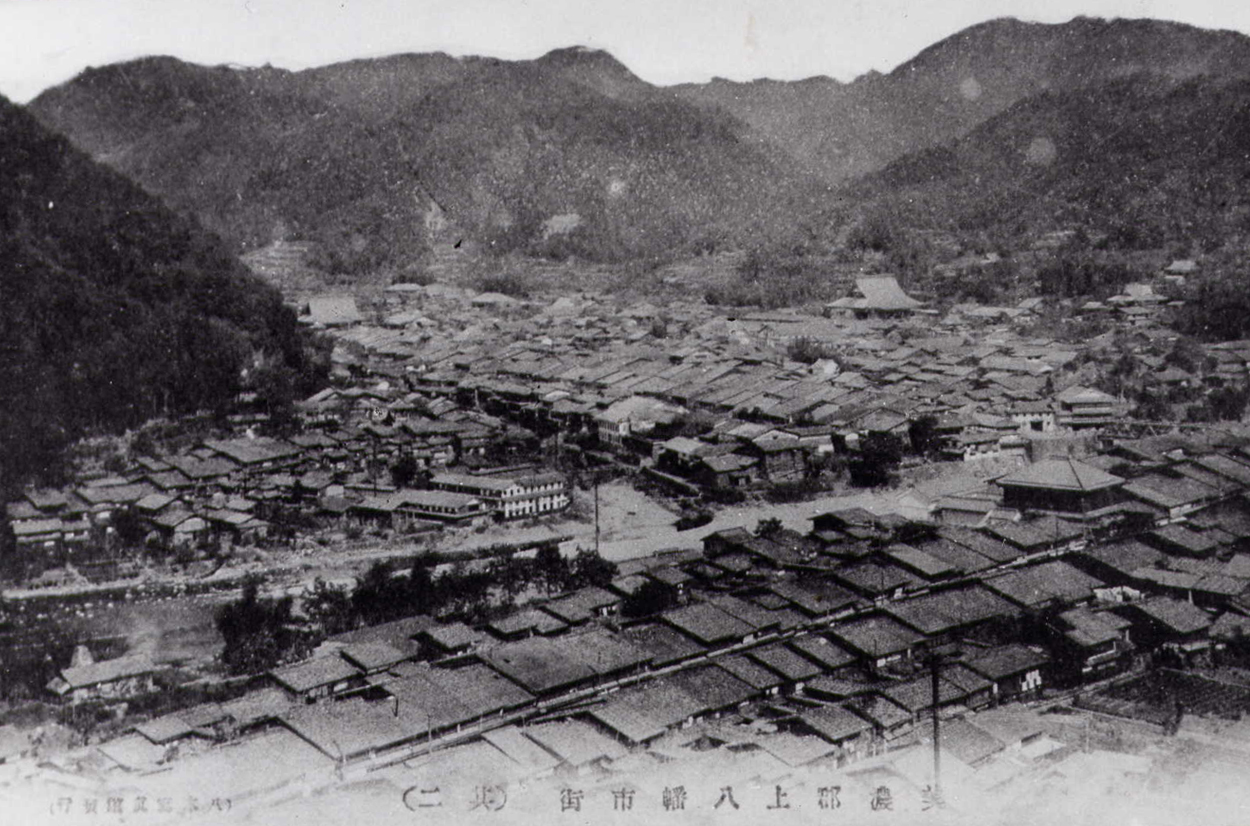
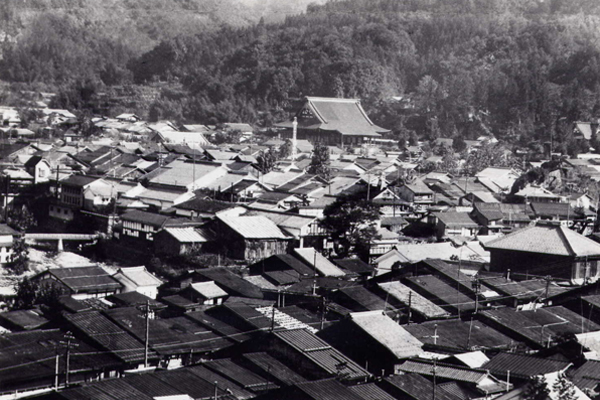
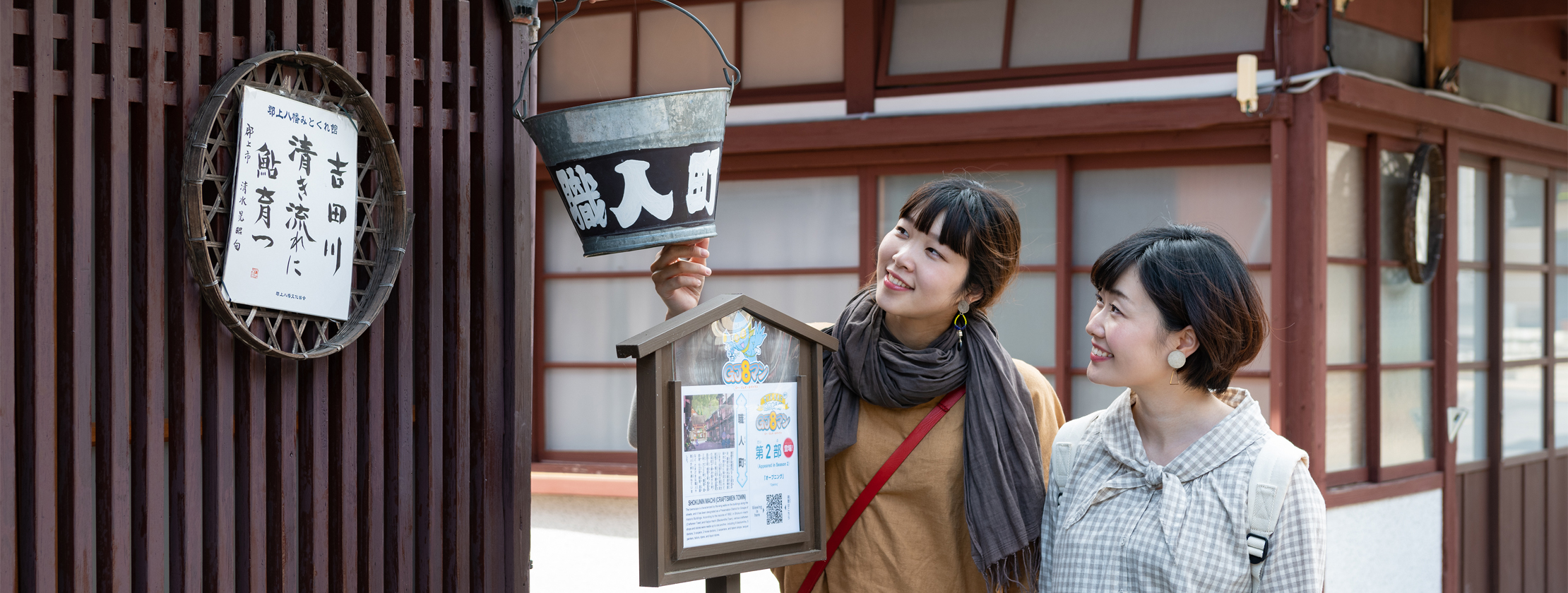
Wing walls, fire buckets, beautiful waterways
A town full of ancient wisdom
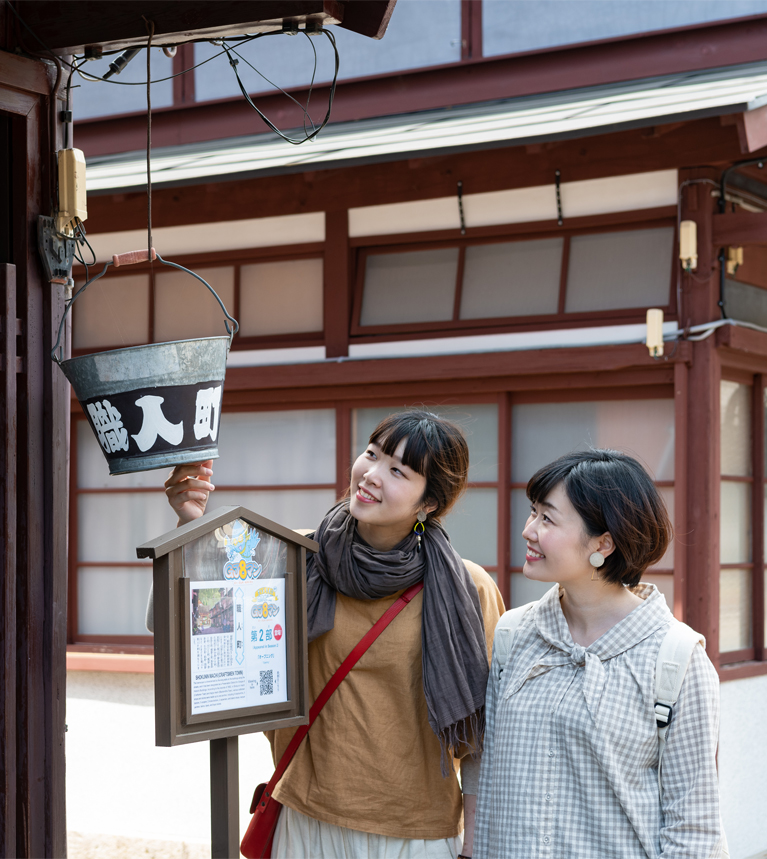
Wing walls, fire buckets, beautiful waterways
A town full of ancient wisdom
One of the characteristics of this old townscape is “Wing walls” at the boundary between houses. This kind of roof can prevent crime, and to prevent the spread of fire. A fire bucket and a bell are hung under the roof, showing a strong awareness of fire prevention. Gujo Hachiman was hit by two big fires due to overcrowded houses. These two fires made people to have a great sense of crisis about fire. Waterways that flow vigorously along all houses in the town are also one of the fire preventing measures. It was built over four years by the castle owner, Endo Tsunetomo, who started the maintenance of the castle town during Kanbun era (1661 – 1673). These kinds of waterways can be found all over the city, and even now, each house has a wooden partition called a shuttering board. Local people used to cool vegetables and rinse laundry. If you walk around the town, you may come across some locals cleaning the waterways. You can feel the real life of people who live here while protecting historic houses and using abundant water carefully. It is one of the great attractions of this townscape.
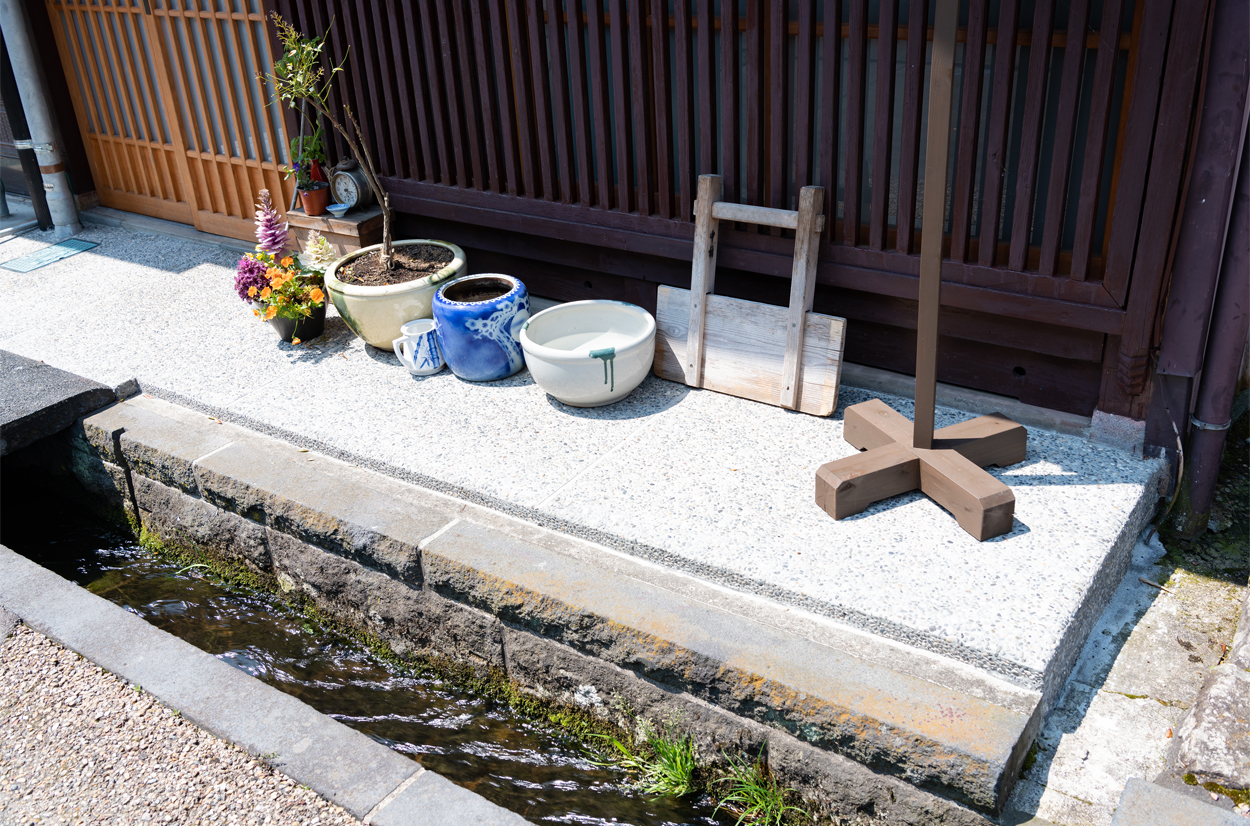
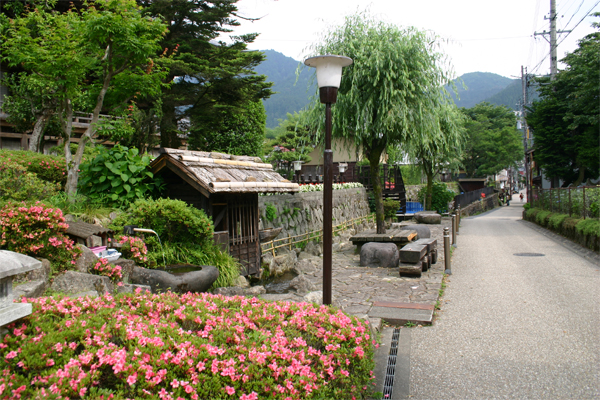
Annyoji Temple Pocket Park

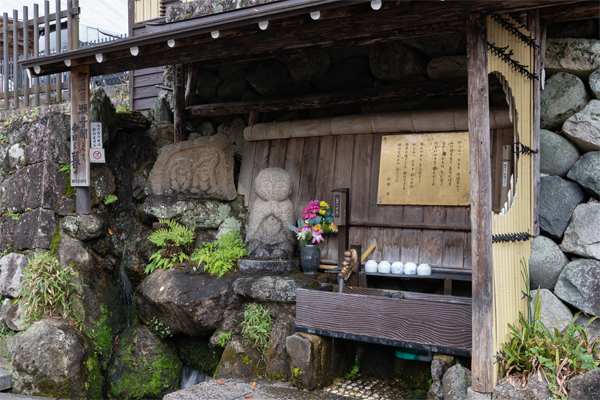
Water tank at Annyoji Temple



Annyoji Temple Pocket Park



Water tank at Annyoji Temple
The main hall of Annyoji Temple is located between the houses in Yanagimachi. A small park for you to take a break or drink some spring water while looking at the waterways. When the autumn leaves are at their peak on a few days of mid-November, the castle tower is surrounded by red maple leaves. It is also called “Tenshu-enjo (Castle tower on fire)” and is so breathtaking.
The main hall of Annyoji Temple is located between the houses in Yanagimachi. A small park for you to take a break or drink some spring water while looking at the waterways. When the autumn leaves are at their peak on a few days of mid-November, the castle tower is surrounded by red maple leaves. It is also called “Tenshu-enjo (Castle tower on fire)” and is so breathtaking.
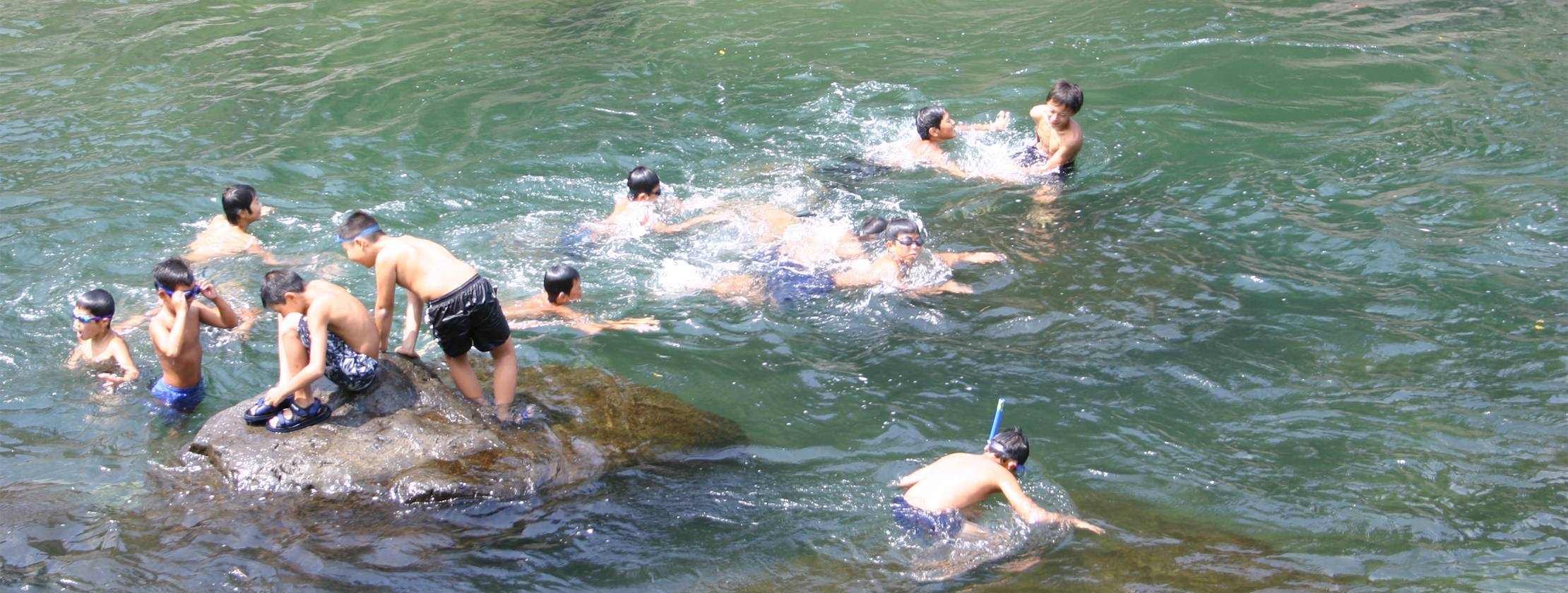
Walking through the path
along Yoshidagawa River
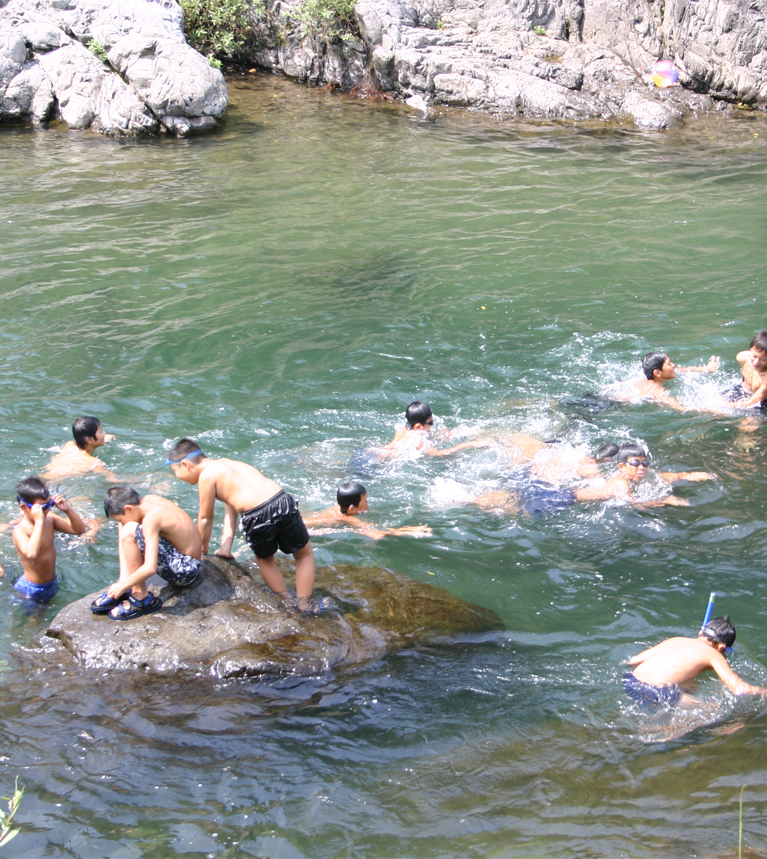
Walking through the path
along Yoshidagawa River
Gujo Hachiman is located at the upstream of Nagaragawa River, where Yoshidagawa and Kodaragawa Rivers flow from the mountains of Okumino. Blessed with abundant spring water, it is the center of local people’s lives, with waterways drawing from the river flowing under the townhouses. Walking around the town while looking at such waterside scenery is a pleasure that you can only find here. We are guiding you through various water landscapes of Gujo Hachiman, which has been selected as one of the 100 Best Water Villages.
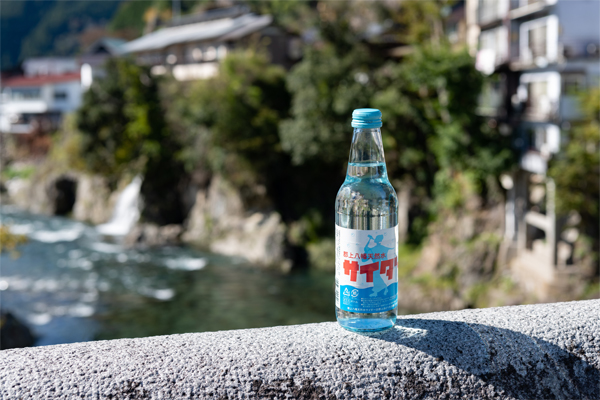
Yoshidagawa River and cider
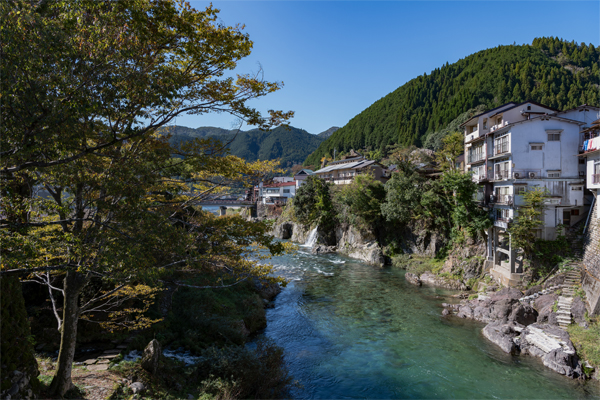
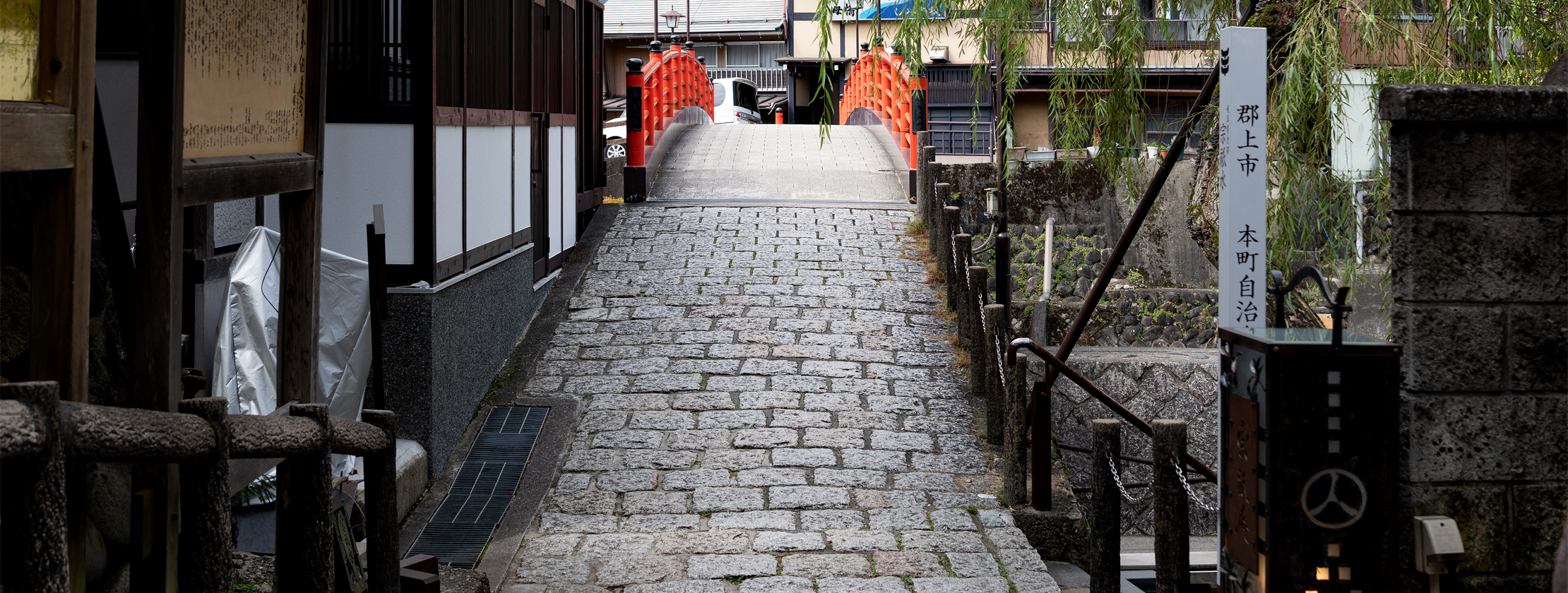
Clear spring water,
alleys with flowing waterways…
A glimpse of local people
living together with water
Shimizubashi Bridge near Sogisui
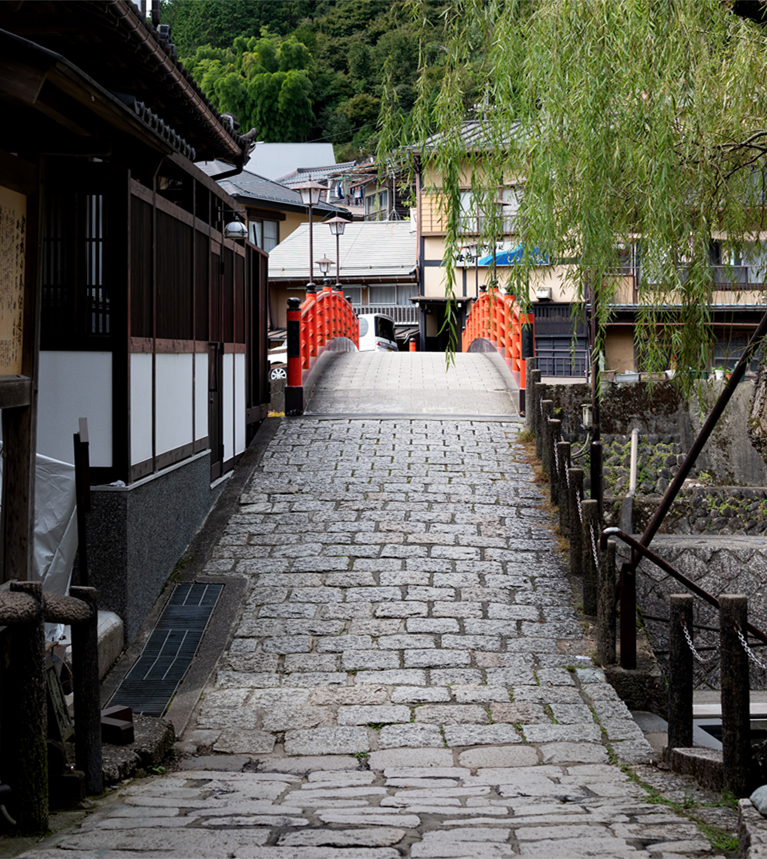
Clear spring water,
alleys with flowing waterways…
A glimpse of local people
living together with water
Sogisui standing on the banks of Kodaragawa River, is a famous water historic site which represents Gujo Hachiman. Clear spring water is coming out from the temple that enshrines the god of water. In 1985, it was selected as the first of 100 Best Waters in Japan by the Ministry of the Environment. The name comes from Iio Sogi, a master of Renga (A kind of Japanese poem) during Muromachi era (1336 – 1573), linked this water to his house and enjoyed it very much. The red Shimizu Bridge, the small shrine with water springs, and the stone pavement are inviting you to come and be healed by the sound of river. Yanakamizu-no-komichi (Yanaka water lane) is a cobblestone alley using about 80,000 boulders from Nagaragawa and Yoshidagawa River to show the flow and vortex of water. It is a place to relax where you can take a walk or take a break seeing the old townhouses and the waterway flowing quietly under the swaying willow trees. You can find children playing in the waterways and local people chatting together. On the other hand, Igawakomichi is a walking path along the largest domestic waterline in the town. Carp and chars swim in the waterways behind houses, and in the summer, people use this waterway to chill watermelons and place Ayu (Sweetfish) in baskets. There is also a laundry area. This place is also an important place for residents to socialize.
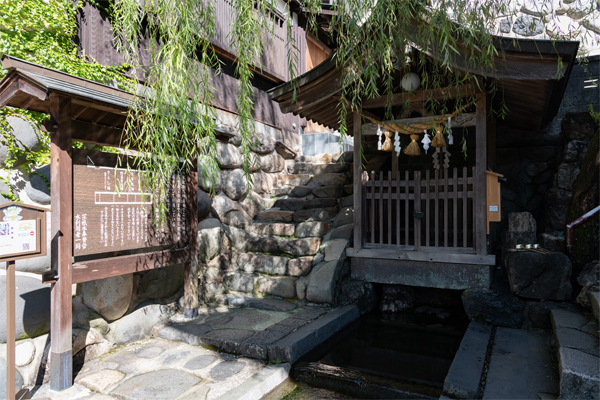
Sogisui
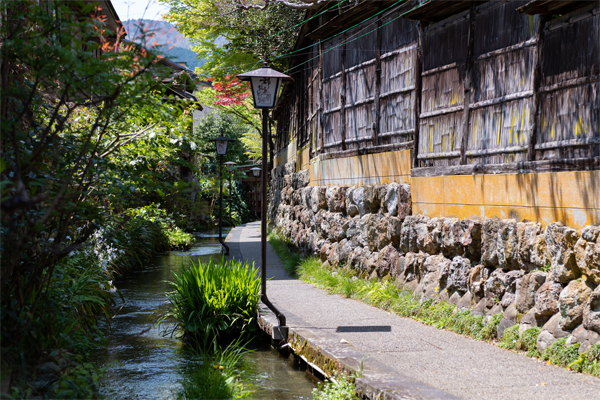
Igawakomichi (Igawa Lane)
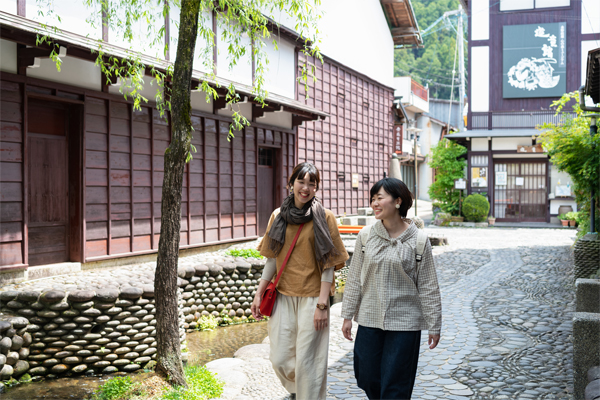
Yanakamizu-no-komichi (Yanaka Water Lane)
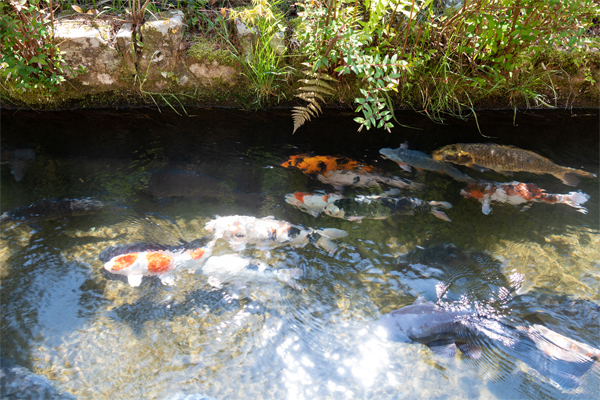
Igawakomichi (Igawa Lane)
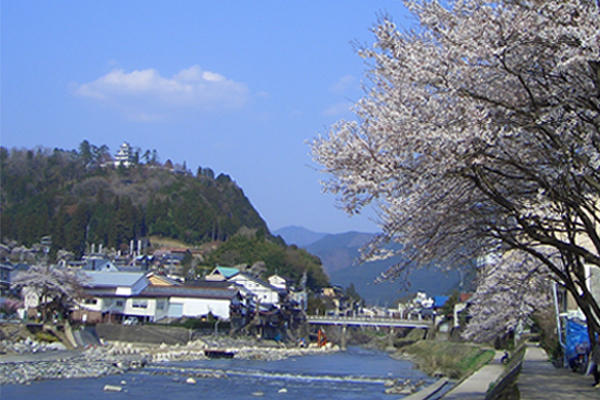


Seeing Gujo Hachiman Castle from
Yoshidagawa Waterpath

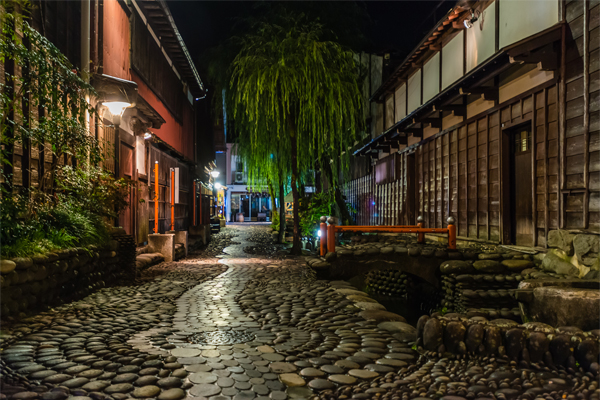


Illumination at
Yanakmizu-no-komichi




Seeing Gujo Hachiman Castle from
Yoshidagawa Waterpath



Illumination at
Yanakmizu-no-komichi
Going down Miyagasebashi Bridge and looking up from Yoshidagawa Waterpath, you can see how great Gujo Hachiman Castle is. In addition, Yanakmizu-no-komichi is lit up at night, and you will be surrounded by a different atmosphere comparing with the daytime.
Going down Miyagasebashi Bridge and looking up from Yoshidagawa Waterpath, you can see how great Gujo Hachiman Castle is. In addition, Yanakmizu-no-komichi is lit up at night, and you will be surrounded by a different atmosphere comparing with the daytime.


